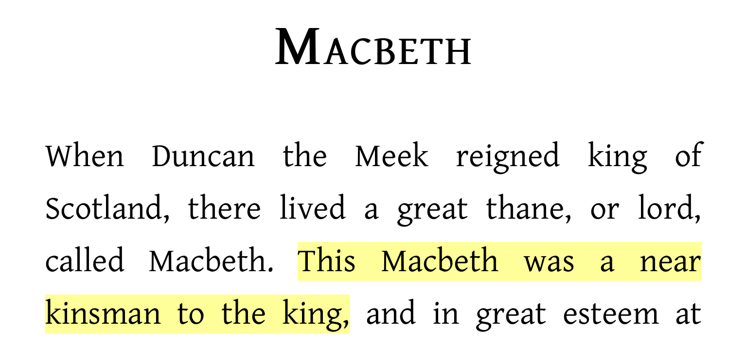What is an Audio-eBook?
An Audio-eBook combines a reflowable text eBook with an audiobook,
enabling advanced functions like synchronous highlighting and tap-to-play.
Benefits of Audio-eBooks
Immersive
the reading by a professional narrator provides an unrivaled immersive experience of the text
Cognitive
several scientific studies showed that learners exposed to both visual and aural stimulation retain more information than just reading or listening
Assistive
reading+listening has been proven useful for mitigating reading disabilities, for example dyslexia
Open
we adopt the open format EPUB 3, so you can enjoy your favourite books on any device
Would you like to try an Audio-eBook?
Note: if you prefer using a PC, you can install Readium, a free extension for Chrome browser, and open the Audio-eBooks with it.
FAQs
What is the EPUB 3 format?
EPUB 3 is the latest version of the EPUB eBook format. This version allows eBook producers to embed audio and video resources directly inside the EPUB container, hence allowing the distribution of a single file, containing both the text and the audio narration of a given work. Moreover, EPUB 3 defines the so-called
EPUB Media Overlays, which describe a standard, declarative way for specifying the synchronization between text and audio.
Why did you choose the EPUB 3 format for your Audio-eBooks?
ReadBeyond chose to start developing our Audio-eBooks in EPUB 3 format because: a) EPUB is an open format, hence it is compatible with any reading system implementing the EPUB 3 specification; b) EPUB 3 natively declares all the features needed to create a good reading+listening experience; and c) the major players in the digital publishing scene are committed to adopt, develop and distribute eBooks in EPUB 3 format.
What is the difference between EPUB 3 Audio-eBooks and Amazon Immersion Reading/Whispersync for Voice?
There is a huge difference: EPUB 3 is an open format, while Immersion Reading/Whispersync for Voice is a proprietary technology. While anyone can produce an EPUB 3 Audio-eBook, only Amazon/Audible can produce Immersion Reading/Whispersync for Voice titles. Moreover, Immersion Reading/Whispersync for Voice titles can be enjoyed only on Kindle devices, while EPUB 3 eBooks can be opened on any device/app supporting the EPUB 3 format.
What about using a text-to-speech (TTS) engine on regular text-only eBooks, instead of pre-recorded audio?
TTS is a very useful assistive technology that has evolved dramatically over time. However, TTS engines are currently unable to semantically interpret the text they are synthesizing, resulting in a monotone narration: we think that the narration of a professional (human) speaker is still far superior for leisure or learning applications. This is evident for application scenarios like learning a foreign language, where natural features of the voice (intonation, pitch, correct pronunciation, etc.) are essential.
Is Menestrello the only app able to open EPUB 3 Audio-eBooks?
Menestrello is a free app specifically designed for Audio-eBooks, and we developed it because the other existing apps lack one feature or another. However any EPUB 3-compliant reading system should be able to open EPUB 3 Audio-eBooks; for example: Apple iBooks, IDPF Readium, or Infogrid Pacific AZARDI. Note, however, that not all the features present in Menestrello are available in the aforementioned applications: for example, Apple iBooks does not support Media Overlays in reflowable eBooks. Please also note that EPUB 3 is a relatively young standard, and many improvements to the current reading systems are expected by the end of 2014.
Your sample Audio-eBooks look good, but are there any commercial titles yet?
We have collaborated with the Italian audiobook publisher
il Narratore Audiolibri since December 2012. So far, we have produced nearly 50 commercial EPUB 3 Audio-eBooks, for a series called
The Voices of the Classics. Recently, we started working with a couple of other publishers, but these titles are not available to the public yet.
Since Apple iBooks supports Media Overlays in Fixed Layout eBooks, why did you opt for reflow(able) format?
Fixed Layout (FXL) is usually adopted for illustrated books, where exact placement of illustrations and text is needed. FXL is not really suitable for long texts, like novels, because it severely reduces the user's options for customizing her reading experience, in particular the typographic settings. Moreover, FXL is not really standardized/well-supported yet. Finally, the IDPF EPUB 3 specification does not restrict the use of Media Overlays to FXL.
I am a publisher/researcher/teacher/journalist and I would like to learn more about Audio-eBooks. Can I get in touch?
Absolutely, we will be glad to hear from you! Just write us an
email.
Legal notes
"AZARDI" is a registered trademark of Infogrid Pacific Ltd.
"EPUB" is a registered trademark of the IDPF.
"iBooks", "iPad", and "iPhone" are registered trademarks of Apple Inc.
"Immersion Reading", "Kindle", and "Whispersync for Voice" are registered trademarks of Amazon Inc.
"Readium" is a registered trademark of the Readium Foundation.
All other trademarks are the property of their respective owners.


